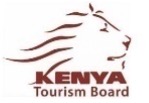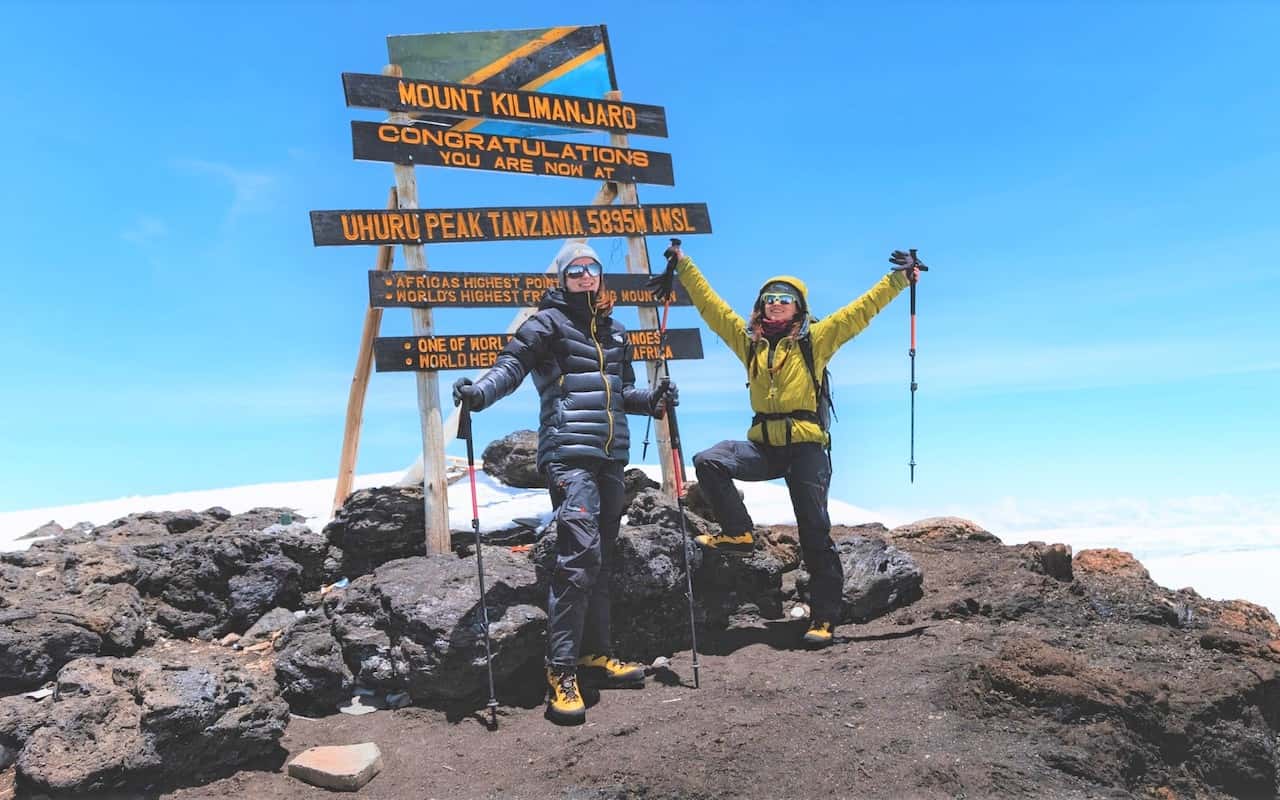
Lemosho’s route is beautiful and unspoiled, with wild game sightings in the forest section. For some reason, known only to your inner self, you climb Kilimanjaro’s summit towering far above.
At the top, you rest on a boulder, take a deep draft from your canteen, and survey the view far below of Kenya’s Amboseli wetlands, which are extraordinary and stretch as far as the eye can see. Your mood changes as the mountain winds blow over Kibo’s peak.
This is raptor territory. A crowned eagle soars on the thermals with outspread wings and talons thrust forward, searching for prey with haunting cries of “kewee, kewee.” Suddenly, the power of the extinct volcano soothes your soul, and you are at peace…
Mount Kilimanjaro is the highest free-standing mountain in the world, and you are making the ascent.
This large, dormant stratovolcano is composed of three distinct volcanic cones and is believed to have last erupted 2.5 million years ago. Kilimanjaro’s snow drains to its base through a network of streams, rivers, and waterfalls.
The Lemosho Route starts on the western flanks of Mt. Kilimanjaro at the Londorossi Gate.
You may spot wildlife along the way, including leopards, Cape buffalos, black and white colobus monkeys, blue monkeys, and hundreds of bird species. Birds flock to Kilimanjaro’s ecosystem from the whole of Africa, and their melodious calls are often heard while traversing through various vegetation zones.
Fly into Kilimanjaro International Airport in Arusha, (JRO) and when your flight arrives, you'll be met by one of our owner guides who will have transportation waiting to deliver you to the Aishi Machame Hotel in Moshi in the foothills of Kilimanjaro.
Tranquil and tastefully decorated, the ambiance here is unique. It’s surrounded by the African wilderness, a retreat from bustling civilization and a perfect place to unwind. Aishi Machame Hotel features garden view rooms, a swimming pool, a bar, restaurant and free Wi-Fi.
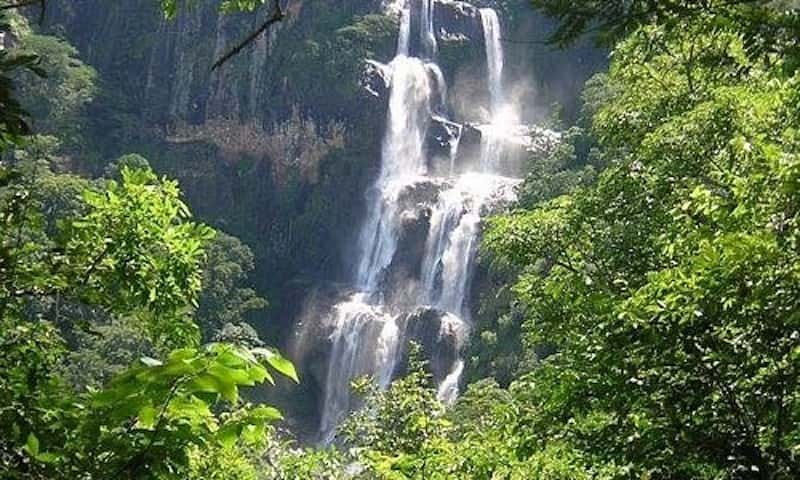
You get to sleep in. We leave late morning for a visit to Materuni Village and hike to the best and longest waterfalls among all of Kilimanjaro at 295 feet (90m). It’s a perfect location to do a photo shoot for your social media platforms.
The village offers a hot lunch with Chagga tribal songs, followed by a tour of a coffee plantation in Kilimanjaro’s foothills. You can even make your own cup of organic coffee the local way from roasting to drinking.
We set up an amazing charter flight around Kilimanjaro to photograph Lemosho route from the air and to obtain a greater perspective of Mt. Kilimanjaro’s vast ecosystem. In the evening, our managers give a briefing, and to make sure you are ready to begin the climb.
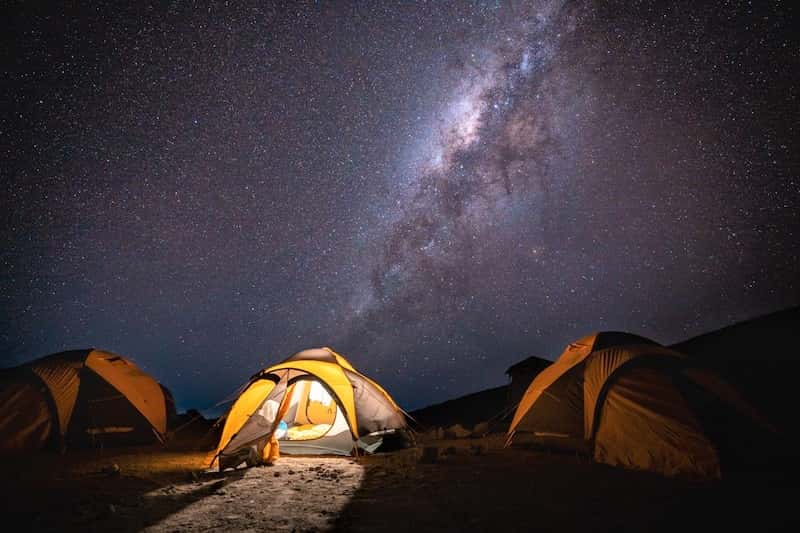
Moshi to Londorossi Gate to Mti Mkubwa Camp.
Our guides and a mountain support crew arrive at the hotel in the morning and hold a quick briefing before we drive to Kilimanjaro National Park's western Londorossi Gate entrance. After the formalities of acquiring climbing permits and registering with the search and rescue service, the group treks towards the first camp on the route: Mti Mkubwa Camp at 8,694 feet (2,650 m).
By the time you reach the camp, our professional mountain crew has already set up camp, and begun preparing lunch.
After lunch, the group departs on an acclimatization hike up Shira plateau, featuring a 984 foot (300 m) gain in altitude. We rest there a short time, part of the acclimatization process, then descend back to Mti Mkubwa Camp, where a hot dinner awaits.
This acclimatization hike is an easy trek with a slight gain in altitude done in order to speed up the acclimatization process. You should take the acclimatization hikes very seriously as they help increase your chances to climb Kilimanjaro successfully and save you from the consequences of altitude sickness.
Mti Mkubwa Camp to Shira 1 Camp.
Wake up early and enjoy a filling breakfast. Trek out of the rainforest and enter the low alpine moorland zone, which gradually leads further up the plateau with stunning views of the Shira Plateau and Kibo Volcano.
Overall, the passage from Mti Mkubwa Camp to the second high-altitude camp, Shira 1 Camp, is rather easy and takes about 5-6 hours. This offers a gradual acclimatization process, which is a mainstay of good trekking. When you reach the camp, your team of specialists have a hot lunch ready, giving you time to rest in your tent or explore the nearby area.
Change in Elevation: Mti Mkubwa Camp 8,694 feet (2,650 m) to Shira 1 Camp 11,844 feet (3,610 m)
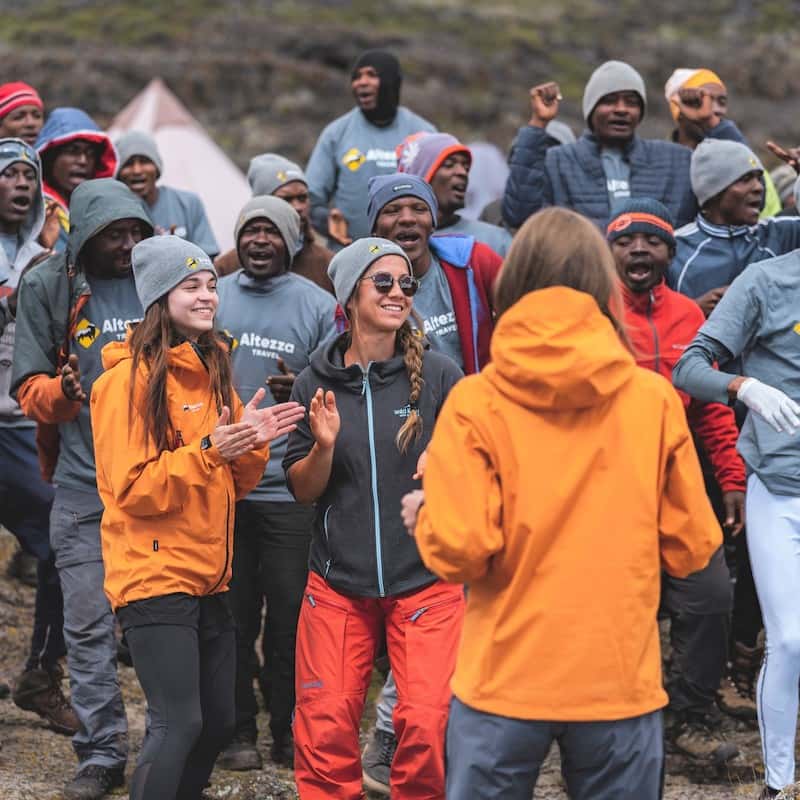
Shira 1 Camp to Shira 2 Camp.
This is the best place to see Mount Meru, the second-highest in Tanzania, weather permitting. When we arrive at camp, lunch is served, followed by a two-hour rest.
Everyone will complete an acclimatization hike towards Lava Tower that features a 985 foot (300m) gain in altitude, which is critical to ensure a comfortable and safe progress over the next two days, and is an advantage of this route.
Elevation: Shira 2 Camp 12,631 feet (3,850m)
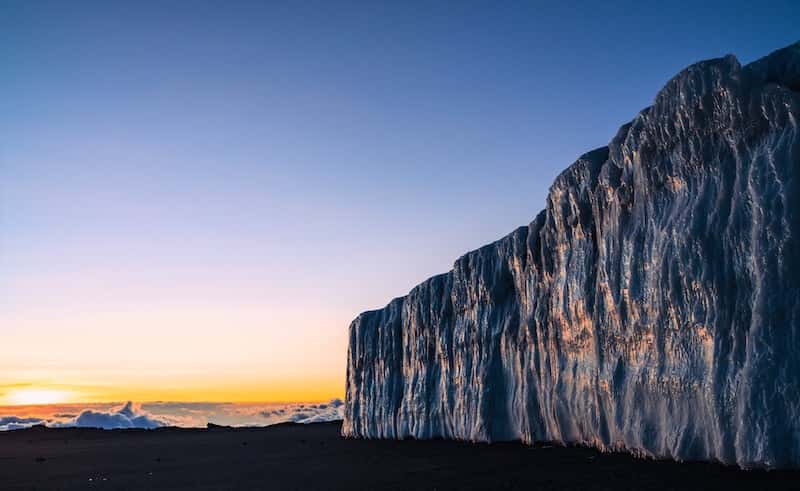
Shira 2 Camp to Barranco Camp.
After breakfast we hike to the key point of the route: Lava Tower 15,091 feet (4,600 m). This section of the route has a lot of ascents and descents.
Some parts of the trek may be difficult, and it’s common to experience some discomfort, but in order to successfully acclimate to the altitude you must spend at least 1–2 hours here, so this is where lunch is served. After lunch, we descend to Barranco Camp for the night. Climb high, sleep low!
The famous Barranco Wall is impressive both in size and steepness! The next day you will be climbing it, but don't worry: it features a very simple hiking trail that is not intimidating at all.
Elevation: Barranco Camp 12,795 feet (3,900 m)
Barranco Camp to Karanga Camp.
We leave early after a filling breakfast to hike the Barranco Wall, thus avoiding crowds from other groups which could slow us down. Hiking up the gorge wall is not difficult and only takes an hour. After the climb, rest up and we’ll assist with your photo shoot in front of Kibo volcano.
The next leg is more difficult leading to Karanga Camp, which features numerous ascents and descents during the route. Our guides are experts at choosing an optimal pace for the group. After reaching camp, a warm lunch is ready. Rest up for several hours before another acclimatization hike in the direction of Barafu with a 656-foot (200 m) gain in altitude, then descend back to the camp.
This trek offers fantastic views of the vistas across the plains lying north of Kilimanjaro stretching out as far as the eye can see across the Kenya-Tanzania border.
Elevation: Karanga Camp 13,106 feet (3,995 m)
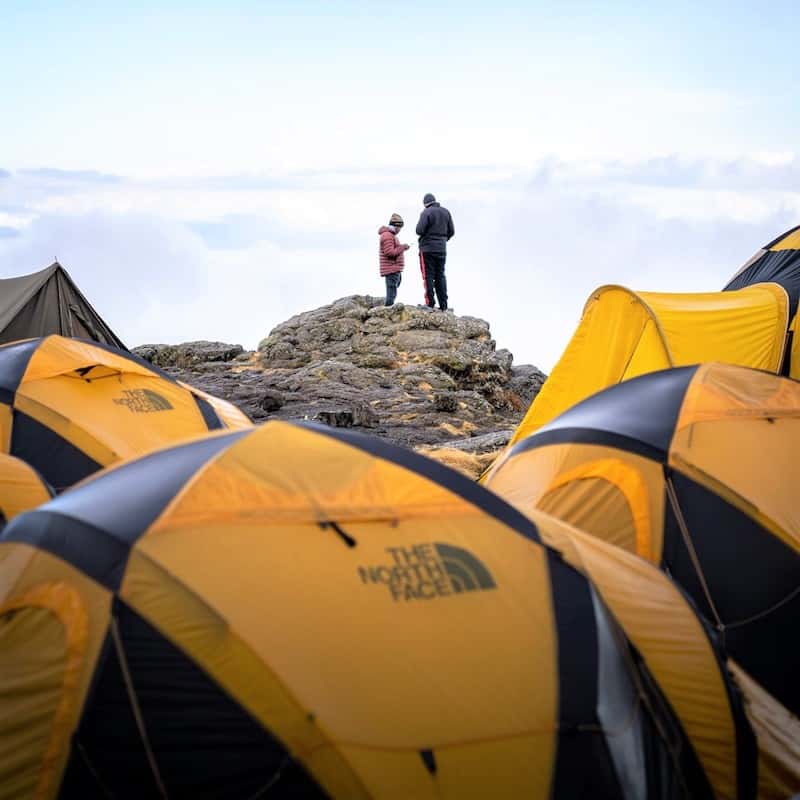
Karanga Camp to Barafu Camp.
In the morning, after a filling breakfast we hike to Barafu Summit Camp, the starting point for the night summit to Uhuru Peak. Our team sets up a camp ahead of time, including tents and sleeping bags, so you can relax as soon as you arrive.
After regaining strength, we do one final acclimatization hike towards the intermediate Kosovo Summit 15,978 feet (4,870 m) and then back to Barafu Camp, where a hot dinner is served. Spend the remainder of your day resting and sleeping before the night’s summit.
Elevation: Barafu Camp 15,331 feet (4,673 m)
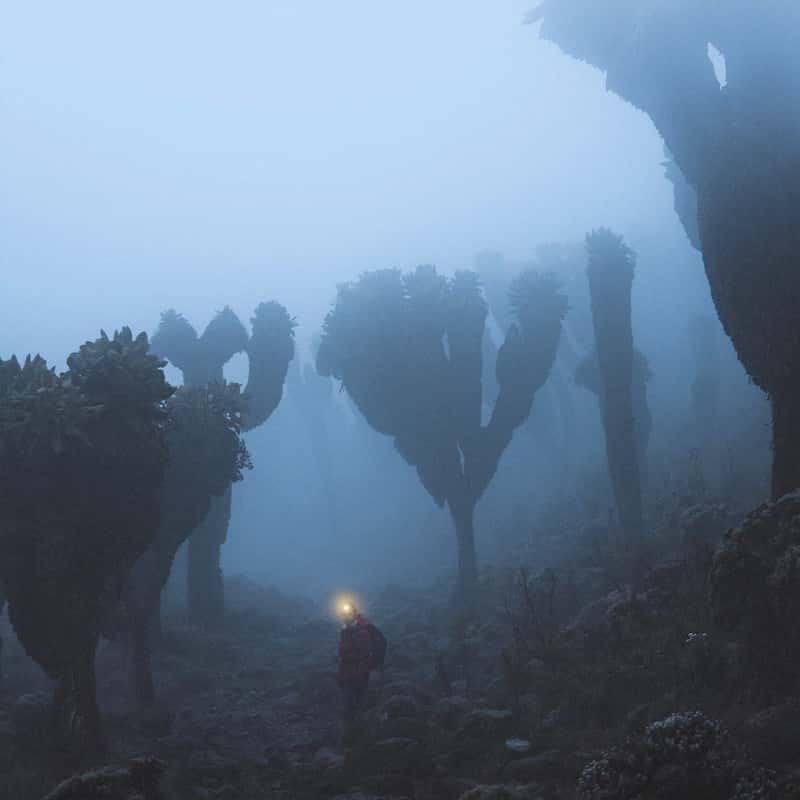
Barafu Camp to Uhuru Peak to Millenium Camp. Summit Mt. Kilimanjaro’s tallest peak, Uhuru Peak at 19,341 feet (5,895 m).
Reaching the summit is the literal and figurative peak of your Kilimanjaro expedition.
To reach the summit by dawn, we depart the camp around midnight. Technically-speaking, the climb is relatively simple; however, given the high altitude, even normal physical activity can feel strenuous.
During the ascent, a team of special high-altitude porters joins our guides to assist our climbers. We use a 1:1 ratio of climbers-to-guides for the final ascent. This means that a well-trained specialist will be helping each expedition participant as they climb through the night to reach the summit. The porters carry oxygen cylinders, and our safari nurse monitors the well-being of our climbers during this last push.
Once reaching Uhuru Peak, we remain there for 30 to 40 minutes. Take this time to photograph the incredible views surrounding the glaciers and watch an amazing sunrise with a view across Africa. We’ll assist with your photo shoot. You’ll also want a video of yourself at the summit. We’ll record your impressions of your climbing expedition to the highest point in Africa and achieve what many perceive as the most challenging feat of endurance in their lives.

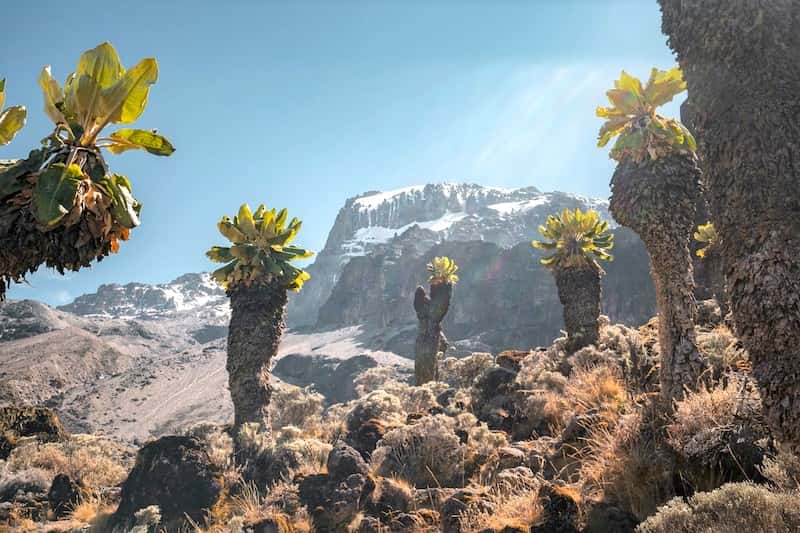
Millenium Camp to Mweka Gate.
The Millenium Camp is situated in a tropical rainforest. When you wake up, you feel the reduction in altitude, and the satisfaction of reaching the summit. After a hot breakfast, we hike down to the park's exit, Mweka Gate, where you sign the guest book, and we present you with a commemorative certificate documenting your Mt. Kilimanjaro climb.
We’ll have our long farewells on the drive back to Moshi, where you can indulge in a hot shower, a hot meal, and a warm bed.

You may want to add on a safari or beach package.
If you’re interested in an add-on package, please contact us and advise the number of days and people and your price range for safari lodge accommodations.
* A private chartered flight around Kilimanjaro is by reservation only as we are chartering aircraft, which has limited seating. The flight is included if you reserve it. We split the price of the flight among everyone flying, which brings it to a reasonable price. We won’t know the final price until everyone has reserved their seats.


